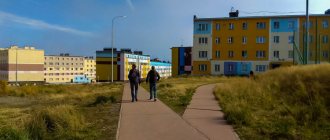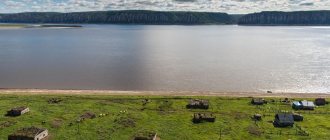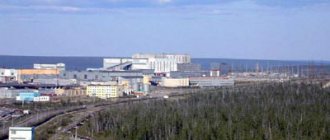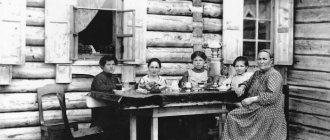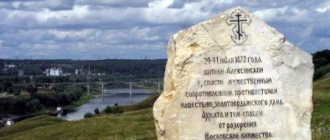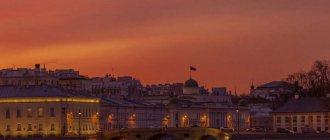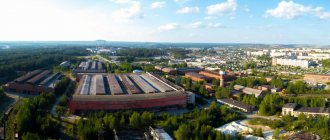In terms of the number of residents, Yakutia ranks 57th among Russian regions
The permanent population of Yakutia as of January 1, 2021 was 982 thousand people, including in cities and towns - 651.1 thousand people (66.3%), in rural areas - 330.9 thousand people (33.7% ). In terms of the number of inhabitants, the republic ranks 57th among the regions of Russia and 5th in the Far Eastern Federal District, YSIA reported in Sakha (Yakutia)stat.
Compared to the beginning of 2022, the population of the republic increased by 9975 people (or 1.0%), including urban - by 8362 people (or 1.3%), rural - by 1613 people (or 0.5 %). The share of urban residents increased from 66.1% to 66.3%, rural residents decreased from 33.9% to 33.7%.
The population growth of the republic is due to migration and natural growth.
At the end of 2022, the migration loss was replaced by an increase, the excess over the natural increase was 1,943 people.
Natural growth in the republic is maintained due to the excess of the number of births over the number of deaths. In 2022, the number of births exceeded the number of deaths by 44.2% (in 2022 – 68.6%).
The population has increased compared to the beginning of 2022: in the municipality “city of Yakutsk” by 7518 people, in the municipality “Zhatai” (159), in Neryungrinsky (981), Megino-Kangalassky (493), Suntarsky (256), Namsky (209) , Khangalassky (179), Verkhnevilyuysky (161), Gorny (161), Nyurbinsky (130), Lensky (128), Vilyuisky (125), Churapchinsky (107), Tattinsky (84), Olekminsky (79), Momsky (77) , Zhigansky (67), Amginsky (61), Tomponsky (57), Ust-Aldansky (52), Eveno-Bytantaysky (34), Allaikhovsky (29), Ust-Yansky (27), Anabarsky (19) regions.
At the same time, in the municipality “city of Yakutsk”, in the Megino-Kangalassky, Suntarsky, Namsky, Khangalassky, Gorny, Oleneksky, Momsky, Zhigansky, Tomponsky, Eveno-Bytantaysky, Allaikhovsky, Ust-Yansky districts, the population increased due to natural and migration growth, in Verkhnevilyuysky, Nyurbinsky, Vilyuisky, Churapchinsky, Tattinsky, Amginsky, Ust-Aldansky, Anabarsky districts - due to the excess of natural growth over migration outflow.
In the remaining 12 municipal districts, the population has decreased. The largest reduction was noted in the Aldansky district (by 333 people), Mirninsky (303), Ust-Maisky (213), Olekminsky (98), Verkhoyansky (70), Kobyaisky (64), Abyysky (33), Nizhnekolymsky (32), Oymyakonsky (21), Srednekolymsk (20), Verkhnekolymsk (19), Bulunsk (12).
In 7 districts, the population decreased due to migration outflow exceeding natural growth - in Bulunsky, Verkhoyansky, Kobyaisky, Mirny, Nizhnekolymsky, Oymyakonsky, Ust-Maysky districts.
The All-Russian Population Census, which will be held in September 2021, will update data on the population as a whole for the republic and for each municipal entity that is part of it.
The population of Yakutia increased by almost ten thousand people
IA SakhaNews. In terms of the number of inhabitants, Yakutia ranks 57th among Russian regions and fifth in the Far Eastern Federal District. Compared to the beginning of 2022, the population increased by 9,975 people (or one percent), reports the territorial body of the Federal State Statistics Service for the Republic of Sakha (Yakutia).
The urban population grew by 8,362 people (or 1.3 percent), the rural population by 1,613 people (or 0.5 percent). The share of urban residents increased from 66.1 to 66.3 percent, the share of rural residents decreased from 33.9 to 33.7 percent.
The population growth of the republic is due to migration and natural growth. At the end of 2022, the migration loss was replaced by an increase, the excess over the natural increase was 1,943 people. Natural growth in the republic is maintained due to the excess of the number of births over the number of deaths. In 2022, the number of births exceeded the number of deaths by 44.2 percent.
The population compared to the beginning of 2022 increased in the municipality "city of Yakutsk" by 7,518 people, municipality "Zhatai" ( 159 ), Neryungrinsky ( 981 ), Megino-Kangalassky ( 493 ), Suntarsky ( 256 ), Namsky ( 209 ), Khangalassky ( 179 ), Verkhnevilyuysky ( 161 ), Gorny ( 161 ), Nyurbinsky ( 130 ), Lensky ( 128 ), Vilyuisky ( 125 ), Churapchinsky ( 107 ), Tattinsky ( 84 ), Olekminsky ( 79 ), Momsky ( 77 ), Zhigansky ( 67 ), Amginsky ( 61 ), Tomponsky ( 57 ), Ust-Aldansky (52), Eveno-Bytantaisky ( 34 ), Allaikhovsky ( 29 ), Ust-Yansky ( 27 ) and Anabarsky ( 19 ) districts.
In Yakutsk, Megino-Kangalassky, Suntarsky, Namsky, Khangalasssky, Gorny, Oleneksky, Momsky, Zhigansky, Tomponsky, Eveno-Bytantaisky, Allaikhovsky and Ust-Yansky districts, the population increased due to natural and migration growth, in Verkhnevilyuysky, Nyurbinsky, Vilyuisky, Churapchinsky, Tattinsky, Amginsky, Ust-Aldansky and Anabarsky districts - due to the excess of natural growth over migration outflow.
In the other twelve municipal districts, the population declined. The largest reduction was noted in the Aldansky district (by 333 people), Mirninsky ( 303 ), Ust-Maisky ( 213 ), Olekminsky ( 98 ), Verkhoyansky ( 70 ), Kobyaisky ( 64 ), Abyysky ( 33 ), Nizhnekolymsky ( 32 ), Oymyakonsky ( 21 ), Srednekolymsk ( 20 ), Verkhnekolymsk ( 19 ) and Bulunsk ( 12 ).
In the Bulunsky, Verkhoyansky, Kobyaisky, Mirninsky, Nizhnekolymsky, Oymyakonsky, and Ust-Maysky districts, the population decreased due to the excess of migration outflow over natural growth.
Sakha (Yakutia)stat: Representatives of more than 120 nationalities live in the republic
Today, November 4, Russia celebrates National Unity Day - a holiday that personifies the cohesion and national harmony of all peoples inhabiting the country. For Yakutia, this date has special significance. Indeed, according to the latest population census of 2010, representatives of more than 120 nationalities live in peace and harmony on its territory, who develop the economy of the republic, strive to improve the quality of life of the population, and have achievements in the field of culture, education, healthcare, science, physical education and sports, YSIA reported in Sakha (Yakutia)stat.
During the period between the 2002 and 2010 censuses, under the general influence of changes in the socio-economic situation in the country, noticeable changes occurred in the national composition of the republic.
The Yakut population is the most numerous and amounted to 466.5 thousand people or 49.9% of the total population of the republic (97.6% of the total number of Yakuts living in the Russian Federation). Compared to 2002, its number and share increased by 34.2 thousand people and 3.2 percentage points, respectively. The share of the once numerous representatives of Slavic nationalities has decreased: Russians - from 41.2% to 36.9%, Ukrainians - from 3.6% to 2.1%, which is mainly due to their migration outflow outside the republic.
According to the 2010 census, the number of Russians was 353.6 thousand people. Before the 2002 census, they were the most numerous nationality (according to the 1989 census - 550.3 thousand people or 50.3%).
The number of Ukrainians according to the 2010 census compared to 2002 decreased by 14.3 thousand people (1.7 times) and amounted to 20.3 thousand people.
According to the results of the All-Russian Population Census of 2010, the number of indigenous peoples of the North increased: Evenks from 18.2 to 21.0 thousand people, Evens - from 11.7 to 15.1 thousand people, Dolgans from 1.3 to 1.9 thousand people, Yukaghirs from 1.1 to 1.3 thousand people, Chukchi from 602 to 670 people. Their share in the total population of the republic also increased - from 3.5 to 4.2%. An important role in the increase in the number of northern peoples was played by a change in national identity.
The shares of indigenous peoples of the North living in the republic in the total number of these nationalities in the Russian Federation were: Evenks - 55.5%, Evens - 67.3%, Dolgans - 24.2%, Yukaghirs - 79.9% and Chukchis - 4.2%.
Also, under the influence mainly of labor migration, in 2002-2010 the number of Kyrgyz increased by 3.5 times, Uzbeks by 2.8 times, Tajiks by 2.4 times, and Armenians by 33.5%.
According to the 2010 census, compared to 1989, among all nationalities in Yakutia, the proportion of people who indicated Russian as their native language has increased. In 1989, out of 1,000 Yakuts, 951 people knew their native language, and in 2010 the figure decreased to 940 people. Most Evenks and Evens consider the Yakut language their native language.
Accurate data on the population size, its national composition and language proficiency, level of education, sources of livelihood and other characteristics of the population will be obtained based on the results of the 2022 All-Russian Population Census.
The census will show the ethnic composition of Yakutia
The territorial body of the Federal State Statistics Service for the Republic of Sakha (Yakutia) notes that the only source for identifying the national composition of the population is population censuses.
During the period between the 2002 and 2010 censuses, under the general influence of changes in the socio-economic situation in the country, noticeable changes occurred in the national composition of the republic.
According to the latest population census of 2010, representatives of more than 120 nationalities live in peace and harmony in Yakutia, who are developing the economy, striving to improve the quality of life of the population, and have achievements in the field of culture, education, healthcare, science, physical education and sports.
The Yakut population is the most numerous and amounted to 466.5 thousand people or 48.7% of the total population of the republic (97.6% of the total number of Yakuts living in the Russian Federation). Compared to 2002, its number and share increased by 34.2 thousand people and 3.2 percentage points, respectively. The share of the once numerous representatives of Slavic nationalities has decreased: Russians - from 41.2% to 36.9%, Ukrainians - from 3.6% to 2.1%, which is mainly due to their migration outflow outside the republic.
According to the 2010 census, the number of Russians was 353.6 thousand people. Before the 2002 census, they were the most numerous nationality (according to the 1989 census - 550.3 thousand people or 50.3%).
The number of Ukrainians according to the 2010 census compared to 2002 decreased by 14.3 thousand people (1.7 times) and amounted to 20.3 thousand people.
According to the results of the All-Russian Population Census of 2010, the number of indigenous peoples of the North increased: Evenks from 18.2 to 21.0 thousand people, Evens - from 11.7 to 15.1 thousand people, Dolgans from 1.3 to 1.9 thousand people, Yukaghirs from 1.1 to 1.3 thousand people, Chukchi from 602 to 670 people. Their share in the total population of the republic also increased - from 3.5 to 4.2%. An important role in the increase in the number of northern peoples was played by a change in national identity.
The shares of indigenous peoples of the North living in the republic in the total number of these nationalities in the Russian Federation were: Evenks - 55.5%, Evens - 67.3%, Dolgans - 24.2%, Yukaghirs - 79.9% and Chukchis - 4.2%.
Also, under the influence mainly of labor migration, in 2002-2010 the number of Kyrgyz increased by 3.5 times, Uzbeks by 2.8 times, Tajiks by 2.4 times, and Armenians by 33.5%.
According to the 2010 census, compared to 1989, among all nationalities in Yakutia, the proportion of people who indicated Russian as their native language has increased. In 1989, out of 1,000 Yakuts, 951 people knew their native language, and in 2010 the figure decreased to 940 people. Most Evenks and Evens consider the Yakut language their native language.
Accurate data on the population size, its national composition and language proficiency, level of education, sources of livelihood and other characteristics of the population will be obtained based on the results of the 2022 All-Russian Population Census.
Yakutia: a people who managed to once again become the majority on their land
YAKUTIA.INFO. The Belarusian news site “Nasha Niva” published an article about Yakutia, we invite you to read it.
Yakutia is a gigantic territory. 3 million square kilometers - 15 times larger than Belarus. And imagine: in 1989, there were only 33% of Yakuts in Yakutia. Today their share has increased to 53%! They have again become the majority in their own land, which gives them new historical chances.
Russia is not only the country with the largest territory in the world, but some of its constituent entities are so huge that they even outstrip most countries in area. For example, the Republic of Sakha (Yakutia) occupies 18% of the territory of Russia. If Yakutia were an independent state, it would become the eighth largest state in the world, just slightly smaller than India.
True, about 1.3 billion people live in India; in Yakutia, on an almost identical area, there is not even a million. This unique formation within Russia has an extremely low population density, primarily due to the harsh climate: in winter the temperature drops to minus 60, and in summer it rises to +40. And under such conditions, the Yakuts created a unique culture.
This republic is unique not only for its unbearable climate and rich mineral reserves, but also for the fact that during perestroika and in the 1990s, Yakutia experienced a real national revival. And as an echo of those times, there is still a high percentage of Yakut schools here, national television and radio broadcast mainly in the Sakha language and create television series in this language, there is a fairly developed stage and popular cinema in the Yakut language. At the same time, the number of Yakuts does not exceed 500 thousand people.
The Yakuts are proud that they came from the shores of Lake Baikal to the lands that became Yakutia, approximately in the 12th-14th centuries, assimilated small local tribes and created a strong, sustainable culture. They even bred the “Yakut cow” and “Yakut horse” breeds adapted to life in the north.
However, in the twentieth century. The Yakuts managed to do even more than other peoples of Russia.
What is the secret of the success of a small people, but settled over a vast territory? What problems does the Yakut national movement face? “Nasha Niva” discussed these issues with the author of the Yakut Wikipedia and popularizer of the Yakut language Nikolai Pavlov .
Nikolay Pavlov
NN: What is the secret of the relative success of Yakutia, especially if you compare you with other peoples of Russia, where the situation with national identity is worse?
MP: There is no special secret. With the beginning of perestroika, processes of growth of national self-awareness took place in all the national outskirts of Russia. The spring, which was under political pressure during the years of the USSR, suddenly straightened. There was a cultural revival of almost all ethnic groups inhabiting Russia.
I see a peculiarity in the preservation of the national Yakut school in Soviet times. Unlike most other Russian republics, the share of national schools in Yakutia has always remained high. All subjects from grades 1 to 10 were taught in the Yakut language. Therefore, the growth of national self-awareness during perestroika turned out to be significant. Many residents of the republic, including non-Sakhas, began to learn the language on their own. Parents tried to provide their children with education in the Yakut language.
True, now there are practically no purely national schools left in Russia, including in Yakutia, since the Unified State Exam [analogous to the Belarusian CT] can now only be taken in Russian. However, in most schools in Yakutia there is a so-called “national component”. Teaching entirely in the Yakut language exists only in primary schools.
Therefore, now, in my opinion, the Yakut language is still losing ground. But, as you aptly noted, compared to other republics, the situation is not so bad. Preserving education in primary school in the Yakut language was a key factor.
The Yakuts are a small ethnic group, but almost all of them speak spoken and written language. There are a large number of magazines, newspapers and books in Yakut. We estimate that last year our main publishing house published about 400 books in the Yakut language. These are not the same circulations as they were during the USSR, but these books are in demand.
There are several nationwide newspapers, and they are also relatively popular, given the small population of Yakutia. For example, the Yakut newspaper “Kyym” has for a long time maintained the highest circulation among the national newspapers of the peoples of Russia and is even ahead of Tatar publications. Although there are 10 times more Tatars than us.
As for the national television "NVK Sakha", it broadcasts around the clock and produces programs mainly in the Yakut language. The same company also has a radio station. And there the broadcast, with a few exceptions, is in the Yakut language.
In the 90s there was a real boom in cinema. We have filmed, and are still filming, a large number of different films and TV series in Yakut. The genres are very different: horror films, comedies, melodramas, and philosophical parables. True, it is not yet entirely clear what will happen in the future. Russia has now decided to significantly increase taxes on film producers, which may prove unaffordable for small players. Our filmmakers are at a loss, because such conditions will make the distribution of Yakut films impossible.
But I would still like to note that the use of language in everyday life, especially in combination with the preservation of the traditional economy (and the Yakuts are the northernmost pastoralists), the development of media, various genres of literature and the development of other cultural institutions is very important.
But the most important thing is the presence of a national school. Only a secondary school can provide people not only with everyday oral speech skills, but also teach them written language, instill reading skills, and understanding of high styles of literary language, so that such people in the future can consume the products of writers and journalists.
NN: How does the Yakut language feel on the Internet?
MP: Indeed, we began to pay attention to the Internet as a medium for new generations of Sakha. It is clear that if the language does not get onto the Internet, young people will move away from their language. We operate with varying degrees of success. There are still not many resources that are entirely in the Sakha language.
If we do not provide representation of the language on the Internet, it will become an outsider. The languages of great nations are handled by corporations. And the small peoples themselves are forced to study the languages of small peoples themselves.
We chose Wikipedia as our priority. It is in demand by people and is used by many. Articles are written by volunteers. Unfortunately, not everyone knows that every person can fill this resource. Our goal is to explain to people that this can be done, and also to show how to do it correctly.
Sociolinguists say that languages that do not have Wikipedia have no future. Having your own encyclopedia means having people who are ready to preserve and develop their language. This also suggests that the language has a developed terminological apparatus, which makes it possible to write scientific articles.
The issue of the prestige of the language is also important. If a language becomes unprestigious, parents stop teaching it to their children. And the presence of Wikipedia helps to increase prestige in the eyes of ordinary people.
NN: Was the Yakut national revival during perestroika and the 1990s exclusively linguistic and cultural, or did it also raise political issues? Were there any ideas about creating an independent Yakut state?
MP: Of course, no nation is monolithic. There have always been and will be different opinions. Such political statements were also made then. But this did not find support among the majority of Yakuts.
On the one hand, among us there has always been a desire for greater independence in order to independently determine our future. This is natural, this can be understood. But claims of complete independence from Russia have never been very popular. The Yakut people do not see any possibility that any serious movement for independence could arise.
NN: In your opinion, is the Russification that took place and is happening in the Russian republics an objective process caused by political and social reasons, or a deliberate policy of Moscow?
MP: It should be understood that federal power is heterogeneous. There are a lot of different movements, different people who think differently. One wing wants Russification in order to prevent possible manifestations of separatism in the country. The other wing, on the contrary, understands that Russia can only be competitive when it manages to maintain its diversity. If a person feels that his language and his culture are valued, respected by the state and supported, then separatism cannot develop. I hope that this understanding will eventually prevail at the federal level.
NN: What is the relationship between the Yakut national movement and the popularizers of the Yakut language with local authorities?
MP: The preservation of culture is in demand among the people. Therefore, officials are forced to maintain culture, especially taking into account the fact that there are many ethnic Sakhas among the officials. Another thing is that there is not always an understanding of how to do it correctly. Sometimes there are not enough funds to do something. Sometimes certain laws adopted due to political factors get in the way.
NN: The Yakut language is a Turkic language. How do they feel about Pan-Turkism in Yakutia?
MP: They are absolutely normal. We, as a Turkic people, have kindred feelings towards other Turks. But it cannot be said that Yakutia participated very actively in this. Firstly, our language, like Chuvash, branched off from common Turkic quite a long time ago, so we do not understand other Turks. And they, accordingly, do not understand us. Secondly, we live quite far from other Turks. And thirdly, most of the Turks are Muslims, and we, the Yakuts, combine Orthodoxy with our traditional religion.
A long time ago, when I was still a schoolboy, I visited Belarus. I felt the high price that your people paid during the Second World War. I was glad that people recognized us, the Yakuts, and immediately asked about freestyle wrestling, because our Olympic champions from Yakutia were then trained by Belarusian coaches. I have Belarusian friends with whom I served in the army, studied at the university and worked in the same company. There is a lot of Belarusian equipment working in Yakutia. Let me convey to your readers the Yakut algys (wish): Keskilgit keҥeetin, oyboҥҥut walbatyn! (May your sources never dry up and may your future be broad!)
Source: m.nn.by
The Republic of Sakha (Yakutia)
The Republic of Sakha (Yakutia) is a subject of the Russian Federation. Belongs to the Far Eastern Federal District. Administrative center is the city of Yakutsk. The Republic of Sakha is the largest region of Russia. The area of Yakutia is 3,083,523 sq km, which is 1/5 of the entire Russia or almost 2/3 of the area of Western Europe. The population, as of 2016, is 959.7 thousand people, of which 63% live in cities. The region is located in three time zones. Most of it is occupied by mountain ranges. The climate is sharply continental, with long winters and short summers.
Yakutia is rightly called a treasury of subsoil resources. There are known deposits of diamonds and gold in the basins of the Aldan, Indigirka and Yana rivers. The republic is rich in natural resources; more than 90% of diamonds and 40% of Russia's gold are mined here. Many people from all over the world are interested in the ancient animal world, especially its prominent representative - the mammoth. In the depths of the region, a significant part of all the unique finds of mammoths, woolly rhinoceroses, bison, musk oxen, cave lions and other animals of a bygone era were discovered in the world. Yakutia is a country of ancient hunting and fishing traditions. This is one of the rarest places on the planet where the purity of nature and the diversity of flora and fauna have been preserved.
One of the most attractive places for tourists is the Lena Pillars Natural Park. This unique natural phenomenon is located right on the banks of the great Lena River. In the bizarre shape of the pillars you can see colonnades, towers, arches, cathedrals, and battlements. On the territory of the republic, in Oymyakon, there is the Pole of Cold of the Northern Hemisphere of the planet, where the lowest temperature (-71.2 C) was recorded on the inhabited earth. The legendary Lake Labynkyr is also located there. It is famous for information about the “northern dinosaurs” supposedly living here - relatives of the “Scotland” Nessie.
Tourists can visit the “Kingdom of Permafrost” complex, which is a huge glacier inside a mountain, designed by a team of professional ice sculptors. Not far from the highest point of the Tuymaada valley, the ethnographic complex “Chochur Muran” is located, built in memory of the Cossack pioneers. The Orto-Doidu Zoo operates all year round, the collection of which consists of more than 120 species of animals from different geographical zones. Folklore, creativity, national crafts, and symbols of the religious and ideological attitudes of the Yakuts are of constant interest.
